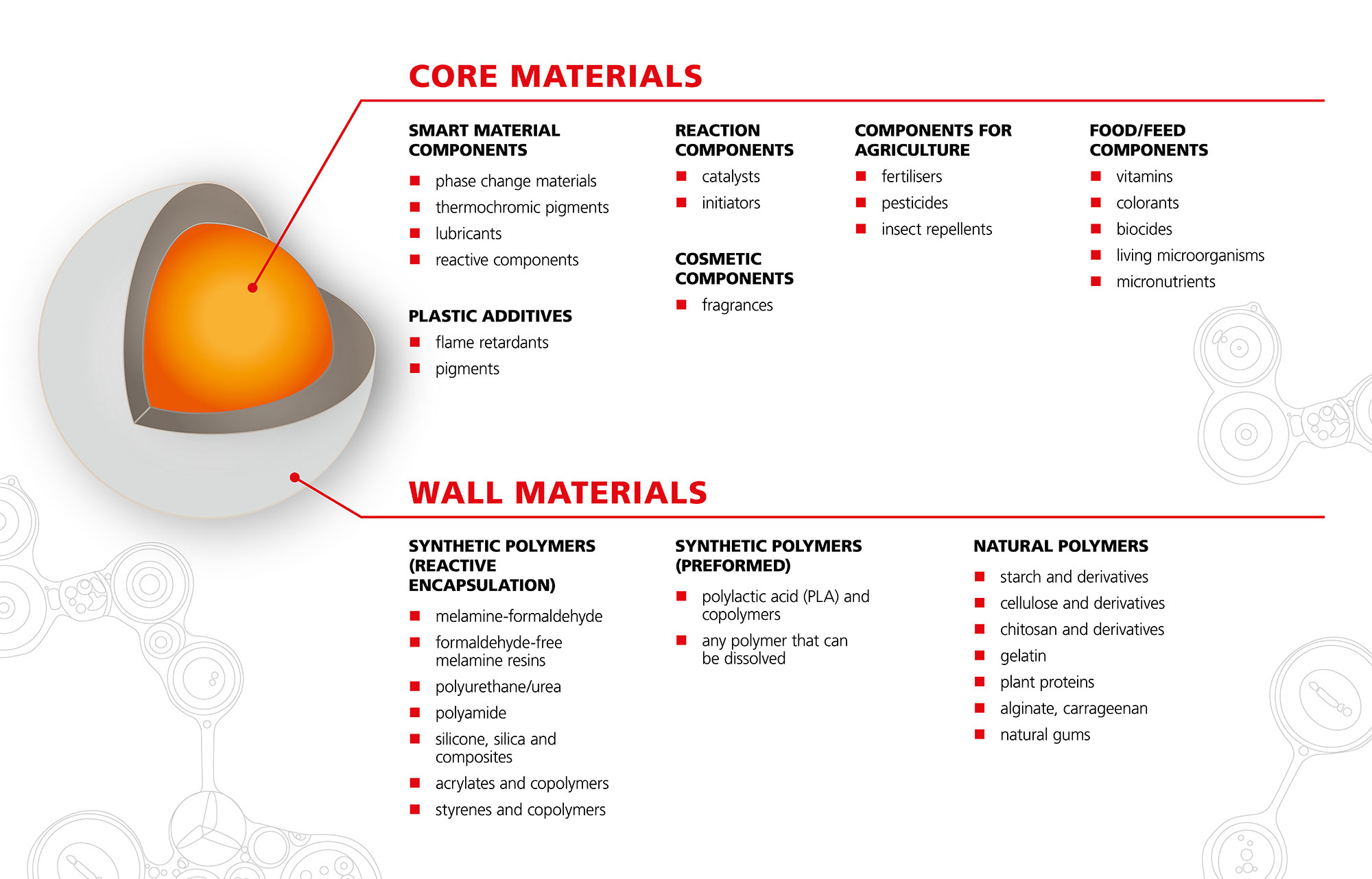Microencapsulation for your application!
Microencapsulation is a technology that can be used to reformulate active ingredients. This allows liquids or pastes to be converted into particles and more easily incorporated into products, such as dispersions, hydrogels, duromers, thermoplastics. Microencapsulation also makes it possible to effectively protect the encapsulated substance either in the processing step and/or in the final product. If required, the active ingredient can be released in a controlled manner. This conserves resources and protects the environment. Microcapsules are used in agriculture, the food industry, polymer processing, pharmaceuticals and cosmetics.
We would be happy to develop fully biobased and/or biodegradable microcapsules and particles for your specific application!

